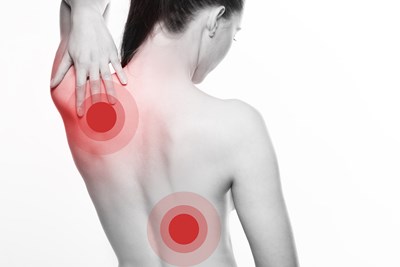Scoliosis is a condition in which a patient’s spine begins to develop an abnormal sideways curve. A majority of scoliosis cases develop without any apparent cause, which is known as idiopathic scoliosis. However, there are certain conditions—such as Marfan’s syndrome, muscular dystrophy, spina bifidia, and cerebral palsy—that can also cause it as well. Additionally, sustaining a physical injury may also lead to an abnormal curve if the spine heals incorrectly.
When it comes to signs and symptoms of this condition, they can sometimes be difficult to detect, especially in the earliest stages of scoliosis. However, as time progresses, it’s likely that the condition will become much more noticeable. While treatment cannot completely reverse the effects of scoliosis, it may be able to prevent symptoms from worsening and doing more damage.
Here is a look at some of the most common signs and symptoms associated with this condition. While not every scoliosis patient will have to deal with each one, it’s likely that he or she will at least experience a few of them.
Visual Signs
The most commonly known sign of scoliosis is the unnatural curvature of the patient’s spine—which typically creates an “C” or “S” shape, depending on the severity of the condition. However, this is rarely the first symptom to be noticed by patients, as it takes a considerable amount of time for the curvature to develop to the point that it can be seen by the naked eye. In some cases, this may be detected earlier if the patient undergoes an X-ray for an unrelated condition.
Aside from a noticeable curve in the spine, there are several other visible indications that someone has scoliosis. For example, one shoulder may rest higher on the body than the other if the spine curves near the top. Similarly, if the curve in the spine occurs near the bottom, it may cause one hip to rest higher than the other.
In moderate to severe cases, it may look like a person’s head is not centered over their body, but in milder instances of scoliosis, this symptom will probably not be noticeable. Additionally, in severe cases the ribcage may begin to protrude more on one side, while the waistline on the opposite side becomes much flatter than normal.
It’s important to realize that even with serious cases of scoliosis, physical symptoms like these still develop slowly over a long period of time. Many times, the first visible symptoms that patients notice seem completely unrelated to the condition. For example, they may notice that their clothing stops fitting like it used it or falls oddly on their body.
Physical Symptoms
In most instances, scoliosis does not cause patients any pain, especially when it occurs in children. However, some people may still experience physical discomfort. Most commonly, this stems from the excess pressure exerted on the cushiony discs that are found between the vertebrae of the spine. However, the exact source of pain in scoliosis patients should still be investigated by a medical professional; there is still a likely chance that it’s being caused by something other than the condition.



